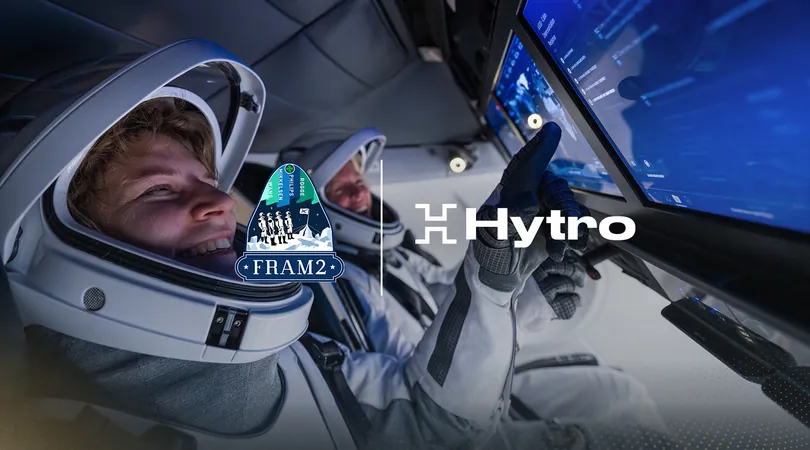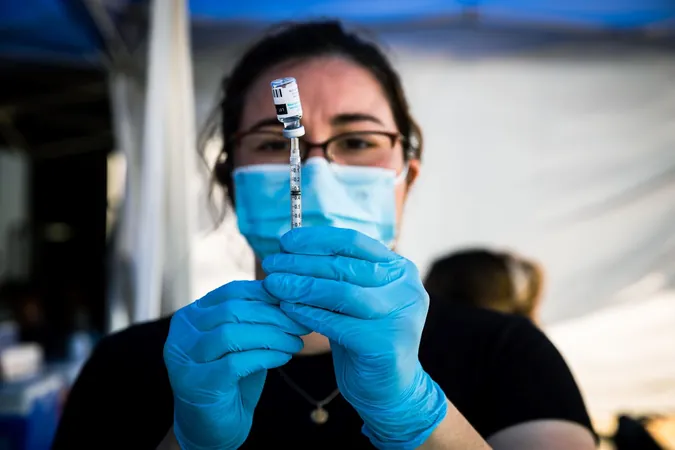
Groundbreaking Blood Flow Restriction Technology Set to Revolutionize Astronaut Health in Space
2025-03-28
Author: Arjun
Introduction
In an exciting development for space exploration, the Fram2 mission is set to integrate Hytro's cutting-edge Blood Flow Restriction (BFR) technology, alongside Delfi’s Personalised Tourniquet System (PTS), to enhance the well-being of astronauts in microgravity. Slated for launch from 28th March 2025, this mission aims to be the first human spaceflight over the Earth’s polar regions, marking a significant milestone in our quest to understand human health in space.
Building on Previous Success
Building on the success of the Polaris Dawn mission in 2024, where BFR technology was first tested, this new initiative will explore the safety and effectiveness of BFR during exercise in a microgravity environment. It’s imperative for astronauts to maintain muscle mass and bone density on long-duration missions, as the absence of gravity can lead to severe physiological challenges.
Collaboration and Research
The collaboration involves Hytro's expertise in wearable BFR technology and a consortium of renowned research institutions, including Sheffield Hallam University’s Advanced Wellbeing Research Centre and Northumbria University’s Aerospace Medicine and Rehabilitation Laboratory. These partnerships will facilitate groundbreaking research into how BFR can mitigate health risks associated with space travel.
Details of the Fram2 Mission
The Fram2 mission, with an international crew of four, will operate in a polar orbit at an altitude of approximately 425 to 450 kilometers above Earth. Over a period of three to five days, astronauts will engage in a series of targeted exercises using Hytro's innovative BFR wearables and Delfi’s PTS. This research will substantially enhance our understanding of blood circulation in zero gravity, ultimately aiming to replicate the benefits of traditional exercise while providing a more resource-efficient solution for space travel.
How BFR Technology Works
BFR technology operates by applying controlled compression to major muscle groups, thereby enhancing muscle stress and adaptation even with low-intensity workouts. This is particularly critical in microgravity where traditional exercise methods may not be feasible. By utilizing BFR, astronauts can achieve significant muscle strengthening and recovery without the need for heavy equipment, thus addressing a core concern: how to maintain physical health during extended missions, such as potential future trips to Mars.
NASA's Interest and BFR Advantages
NASA's interest in BFR stems from its demonstrated ability to optimize muscle performance, a factor that could prove crucial given the constraints of space missions. Hytro's unique passive BFR system integrated into wearable clothing sets it apart from traditional pneumatic systems, which can be bulky and pose operational risks in oxygen-rich environments.
Future Implications of BFR Research
Excitingly, the research program aims for long-term integration of BFR technology into astronaut apparel, potentially enhancing future missions for lunar and Martian exploration. The research outcomes from Fram2 will contribute vital data on muscle health, fluid shifts within the body due to microgravity, and the overall efficacy of BFR practices compared to ground-based standards.
Statements from Experts
Dr. Joe Handsaker, Chief Innovation Officer at Hytro, remarked, “This project is a monumental leap for both Hytro and the BFR community. Demonstrating BFR's safety and effectiveness while performing exercises in space will open new frontiers in space health science.”
Moreover, as Dr. Tom Maden-Wilkinson from Sheffield Hallam University mentioned, “Our work not only aims to support human health in space but is equally pertinent to enhancing muscle health here on Earth. The cross-disciplinary collaboration could lead to revolutionary solutions for future interplanetary travel.”
Conclusion
As excitement builds around the Fram2 mission, it highlights the ever-growing intersection of sports science, technology, and space exploration. With BFR leading the charge, the future of astronaut well-being in space looks brighter than ever. Stay tuned as we follow this groundbreaking journey into the cosmos!


 Brasil (PT)
Brasil (PT)
 Canada (EN)
Canada (EN)
 Chile (ES)
Chile (ES)
 Česko (CS)
Česko (CS)
 대한민국 (KO)
대한민국 (KO)
 España (ES)
España (ES)
 France (FR)
France (FR)
 Hong Kong (EN)
Hong Kong (EN)
 Italia (IT)
Italia (IT)
 日本 (JA)
日本 (JA)
 Magyarország (HU)
Magyarország (HU)
 Norge (NO)
Norge (NO)
 Polska (PL)
Polska (PL)
 Schweiz (DE)
Schweiz (DE)
 Singapore (EN)
Singapore (EN)
 Sverige (SV)
Sverige (SV)
 Suomi (FI)
Suomi (FI)
 Türkiye (TR)
Türkiye (TR)
 الإمارات العربية المتحدة (AR)
الإمارات العربية المتحدة (AR)